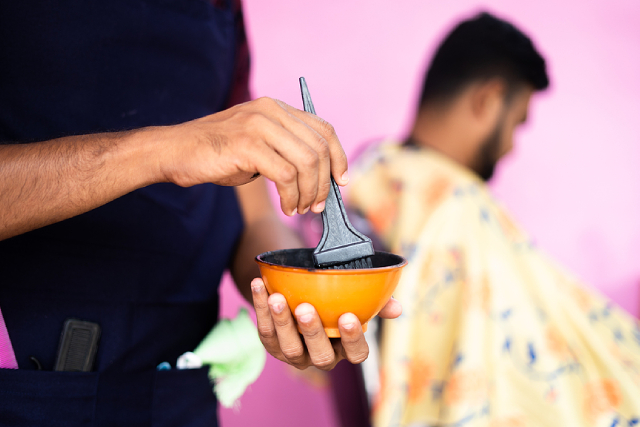Having hair colour is actually nothing new. Switching up one’s hair colour from time to time seems like a cool trend that many teenagers and adults hop on these days. It is usually achieved by bleaching and hair dyeing. As early as the 1950s, people were already going blonde by bleaching their hair. However, experts considered this hair colouring method to be very damaging to the hair.
Even today, many experts still warn about the possible damage that bleaching and hair dyeing can cause to your hair. But are these hair colouring methods that harmful? Can bleaching and dyeing your hair result in hair thinning or hair loss problems? Read on to find out the ultimate answer to these questions.
Can bleaching lead to hair loss?
Bleaching does not cause hair loss, but its aftereffects often lead to it. Bleaching can damage your hair since, after the process, your hair will most likely have a dry, crisp, and stiff appearance. These damages are then often followed by hair loss. Since bleached hair cannot absorb and retain moisture, styling tools like blow dryers and curlers can worsen your hair’s quality.
Once your hair is bleached, the usually normal and harmless activities like sleeping and brushing your hair can cause breakage, which further harms your hair. Particularly, root breakages can make it seem like hair strands are falling off your scalp.
In some instances, however, bleaching can directly result in hair loss, such as when an accident occurs and an imbalanced mixture of products is left on your head for too long. Accidents of this kind can rapidly destroy your scalp and even develop into serious hair issues, such as temporary alopecia.
Can dyeing your hair lead to hair loss?
Colouring or dyeing your hair does not directly cause hair loss since newly-grown hair strands are not affected by the treatment. However, this hair colouring method can increase hair shedding. The dyeing process usually includes the manipulation of hair shafts in which the hair is rubbed, combined, and loosened during the telogen phase. Under this process, the hair neither grows nor falls out, thus increasing the shedding.
Cuticle damage is what leads to frizz, split ends, and breakage. Dyeing your hair can weaken your hair shafts resulting in breakage and hair loss. This happens because hair dyes often contain ammonia and hydrogen peroxide. Ammonia loosens and weakens your hair cuticle, which serves as protection for your hair shafts. Likewise, hydrogen peroxide can impair your hair cuticle as the compound enters it during the dyeing process.
Another common hair problem that results from hair dyeing is weathering. It occurs when high volumes of hydrogen peroxide are applied to lighten your hair colour, such as turning your hair from brunette to blonde. Most people who dye their hair multiple times experience slow growth, shortening of hair, and weathering as an inevitable outcome.
Conclusion
The simple answer to whether or not bleaching and hair dyeing can lead to hair loss is yes. While these hair colouring methods do not directly cause hair loss, they can nonetheless contribute to the damage and thinning of your hair. Hence, although it can be tempting, you should avoid bleaching and dyeing your hair or refrain from doing it too regularly. If you want to switch up the colour of your hair now and then, your safest option would be coloured hair wigs for men and women, which are gaining popularity in Singapore.
If you are already experiencing hair thinning or hair loss due to excessively bleaching or dyeing your hair, one of the best solutions you can try to achieve healthy-looking hair once again is hair replacement in Singapore. Hair replacement involves using a headpiece to instantly and non-surgically hide the patches on your head that have apparent hair loss. With this solution, you can always sport a thick long hair that shines no matter what!


